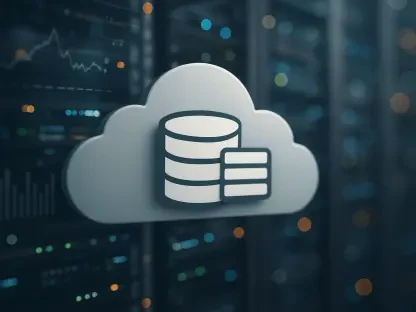The rise of cloud computing and the Software as a Service (SaaS) model has revolutionized the way software is delivered and used. However, this shift has also introduced significant challenges in regulating cyber-surveillance tools, which can be used for both legitimate and illegitimate purposes. Cyber-surveillance tools are essential for law enforcement and intelligence agencies to monitor and prevent criminal activities. These tools can help track down terrorists, disrupt organized crime networks, and protect national security. However, the same tools can be misused by authoritarian regimes to target political opponents, suppress dissent, and violate human rights. This dual-use nature of these technologies makes it challenging to regulate their distribution and use effectively. Particularly concerning is the increased potential for misuse when cyber-surveillance tools are offered through the SaaS model. Unlike traditional software installed on a user’s device, SaaS is hosted on cloud servers and accessed remotely, making it easier for malicious actors to use these tools without leaving a trace and complicating efforts to monitor and control their use.
Legitimate Uses vs. Potential for Misuse
Cyber-surveillance tools have proven to be invaluable assets for national and international security agencies. Governments across the globe rely on these sophisticated tools to gather intelligence on suspected criminals and terrorists, often preventing potential threats before they materialize. For example, law enforcement agencies use these tools to track illegal trade operations, disrupt human trafficking networks, and detect financial fraud. The effectiveness of these tools in maintaining public safety cannot be understated. Unfortunately, these same technologies, designed with the intent of maintaining security and order, can be turned against civilians. Authoritarian regimes have been accused of exploiting cyber-surveillance tools to spy on political dissidents, journalists, and activists. These practices can result in unwarranted arrests, human rights abuses, and suppression of free speech. The line between legitimate use and potential misuse becomes blurred, especially when governments use sophisticated cyber tools to keep their populace under strict surveillance without accountability. This dual-use potential highlights the need for stringent regulatory measures to ensure these powerful tools do not fall into the wrong hands.
The Role of Export Controls
Export controls are intended to prevent the misuse of sensitive technologies, including cyber-surveillance tools. These controls are implemented through various international, regional, and national frameworks, serving as a critical mechanism for preventing the proliferation of tools that could be used for malicious purposes. Notable among these is the Wassenaar Arrangement, an international agreement that aims to regulate the export of dual-use goods and technologies. The European Union has its own dual-use regulation, and individual countries maintain national control lists to monitor the export of such technologies. Despite these concerted efforts, the effectiveness of export controls is somewhat curtailed by the rapid pace of technological innovation and the inherently global nature of the software industry. The SaaS model, where software is hosted on cloud servers, presents particular challenges for regulators. SaaS allows software to be accessed from anywhere in the world, making it difficult to determine when and where an export has taken place. This fluidity and the seamless nature of cloud access add layers of complexity to the enforcement of export controls, necessitating more forward-thinking and adaptive regulatory approaches.
Challenges Posed by the SaaS Model
The SaaS model complicates the regulatory landscape for cyber-surveillance tools in several ways. First, it blurs the lines between software providers, cloud service providers, and end-users. In a typical SaaS arrangement, the software provider develops the tool, the cloud service provider hosts it, and the end-user accesses it remotely. Determining which party is responsible for compliance with export controls can be challenging. This multi-actor scenario involves different geographical locations and jurisdictions, making regulatory oversight a labyrinthine task that can render traditional methods of regulation obsolete. Moreover, the global distribution of cloud servers adds another layer of complexity. Different countries have different regulations and interpretations of export controls, leading to inconsistencies and potential loopholes. For example, Germany focuses on the location of the cloud server, while the Netherlands and the UK consider the location of the accessing entity. Such discrepancies cause significant complications for companies attempting to navigate the regulatory landscape and ensure compliance. This scenario might lead to regulatory arbitrage where companies exploit these inconsistencies to circumvent stringent controls.
National Interpretations and Legal Issues
The varied interpretations of export controls across different countries create significant challenges for enforcement. Some countries may have stricter regulations, while others may employ more lenient approaches. This lack of harmonization can lead to regulatory arbitrage, enabling companies to exploit differences in national laws and bypass strong controls. Therefore, harmonization across states is not only desirable but essential for effective global enforcement. Effective oversight requires clear definitions of export-related concepts, such as what constitutes an export and who is responsible for compliance. Robust enforcement capabilities, including the ability to investigate and trace data transfers, are equally crucial. Different countries have varying approaches to these issues. For instance, the United States may mandate a specific level of encryption for some exports, while other countries may impose licensing requirements. The lack of consistent guidelines exacerbates compliance difficulties and can hinder international cooperation in monitoring and enforcement.
Balancing Regulation and Trade
Regulating the export of cyber-surveillance tools is a delicate balancing act. On one hand, there is a need to prevent the misuse of these tools and protect human rights. On the other hand, overly stringent regulations can stifle innovation and hinder legitimate trade. Finding the right balance is crucial for ensuring both security and economic growth. Companies developing these tools must meet compliance requirements without compromising their competitive edge or ability to innovate. Harmonizing export control interpretations across different countries can help achieve this balance. By providing clearer guidelines and reducing regulatory discrepancies, states can facilitate compliance and enforcement while minimizing the burden on legitimate businesses. Multilateral initiatives, such as the Wassenaar Arrangement, play a vital role in promoting international cooperation and understanding in this area. Effective collaboration among nations can lead to better regulatory practices and help mitigate risks associated with cyber-surveillance tools.
Technological Evolution and Regulatory Adaptation
The rapid pace of technological evolution presents an ongoing challenge for regulators. As new technologies emerge, existing regulatory frameworks may become outdated or insufficient. This is particularly true for cloud computing and the SaaS model, which have transformed the way software is delivered and used. The dynamic nature of technological innovation requires regulators to develop agile and forward-looking strategies. To keep pace with technological innovation, regulators must continuously update and adapt their frameworks. This requires close collaboration between governments, industry stakeholders, and international organizations. By staying ahead of technological trends and anticipating potential risks, regulators can develop more effective strategies for controlling the export of cyber-surveillance tools. Adopting a proactive approach and fostering a dialogue among key stakeholders can lead to the development of robust regulatory mechanisms that ensure both security and advancement.
The Path Forward
Addressing the regulatory challenges posed by cloud-based cyber-surveillance software is a complex, yet essential task. Ensuring that these tools do not fall into the wrong hands is crucial for maintaining civic freedoms and open societies. Clarity in legal interpretations, enhanced enforcement capabilities, and multilateral cooperation are critical for effective oversight. States must strive for a balance that ensures security without stifling legitimate technological and commercial advancements. With the increasing use of cloud computing and the provision of software via SaaS, alongside rapid technological evolution, addressing these regulatory challenges has become urgent. The ongoing efforts to improve the implementation of export controls on surveillance technologies are vital steps towards ensuring that cyber-surveillance tools are used responsibly, protecting both national security and human rights.









